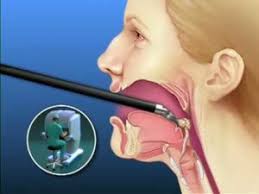head and neck cancer
overview
“Head and neck cancer” is the term used to describe a number of different malignant tumors that develop in or around the throat, larynx, nose, sinuses, and mouth.
Dr. Shilpi Sharma Best head and neck oncologist in Gurgaon. Most head and neck cancers are squamous cell carcinomas. This type of cancer begins in the flat squamous cells that make up the thin layer of tissue on the surface of the structures in the head and neck. Directly beneath this lining, which is called the epithelium, some areas of the head and neck have a layer of moist tissue, called the mucosa. If a cancer is only found in the squamous layer of cells, it is called carcinoma in situ. If the cancer has grown beyond this cell layer and moved into the deeper tissue, then it is called invasive squamous cell carcinoma.
Types of head and neck cancer
- Laryngeal and hypopharyngeal cancer. The larynx is commonly called the voice box. This tube-shaped organ in the neck is important for breathing, talking, and swallowing. It is located at the top of the windpipe, or trachea. The hypopharynx is also called the gullet. It is the lower part of the throat that surrounds the larynx.
- Nasal cavity and paranasal sinus cancer. The nasal cavity is the space just behind the nose where air passes on its way to the throat. The paranasal sinuses are the air-filled areas that surround the nasal cavity.
- Nasopharyngeal cancer. The nasopharynx is the air passageway at the upper part of the throat behind the nose.
- Oral and oropharyngeal cancer. The oral cavity includes the mouth and tongue. The oropharynx includes the middle of the throat, from the tonsils to the tip of the voice box.
- Salivary gland cancer. The salivary gland produces saliva. Saliva is the fluid that is released into the mouth to keep it moist and that contains enzymes that begin breaking down food.
- Swelling or a sore that does not heal; this is the most common symptom
- Red or white patch in the mouth
- Lump, bump, or mass in the head or neck area, with or without pain
- Persistent sore throat
- Foul mouth odor not explained by hygiene
- Hoarseness or change in voice
- Nasal obstruction or persistent nasal congestion
- Frequent nose bleeds and/or unusual nasal discharge
- Difficulty breathing
- Double vision
- Numbness or weakness of a body part in the head and neck region
- Pain or difficulty chewing, swallowing, or moving the jaw or tongue
- Jaw pain
- Blood in the saliva or phlegm, which is mucus discharged into the mouth from respiratory passages
- Loosening of teeth
- Dentures that no longer fit
- Unexplained weight loss
- Fatigue
- Ear pain or infection
- Many cancers of the head and neck can be cured, especially if they are found early. Although eliminating the cancer is the primary goal of treatment, preserving the function of the nearby nerves, organs, and tissues is also very important. When planning treatment, doctors consider how treatment might affect a person’s quality of life, such as how a person feels, looks, talks, eats, and breathes.
- Descriptions of the common types of treatments used for head and neck cancer are listed below. Your care plan may also include treatment for symptoms and side effects, an important part of cancer care.
- Overall, the main treatment options are surgery, radiation therapy, chemotherapy, and targeted therapy. Surgery or radiation therapy by themselves or a combination of these treatments may be part of the treatment plan. More treatment details can be found each specific cancer type section. See the Introduction for a complete list of different types of head and neck cancer.
- Treatment options and recommendations depend on several factors, including the type and stage of head and neck cancer, possible side effects, and the patient’s preferences and overall health. Take time to learn about all of your treatment options and be sure to ask questions about things that are unclear. Talk with your doctor about the goals of each treatment and what you can expect while receiving the treatment. These types of talks are called “shared decision making.” Shared decision making is when you and your doctors work together to choose treatments that fit the goals of your care. Shared decision making is particularly important for head and neck cancer because there are different treatment options. Learn more about making treatment decisions




